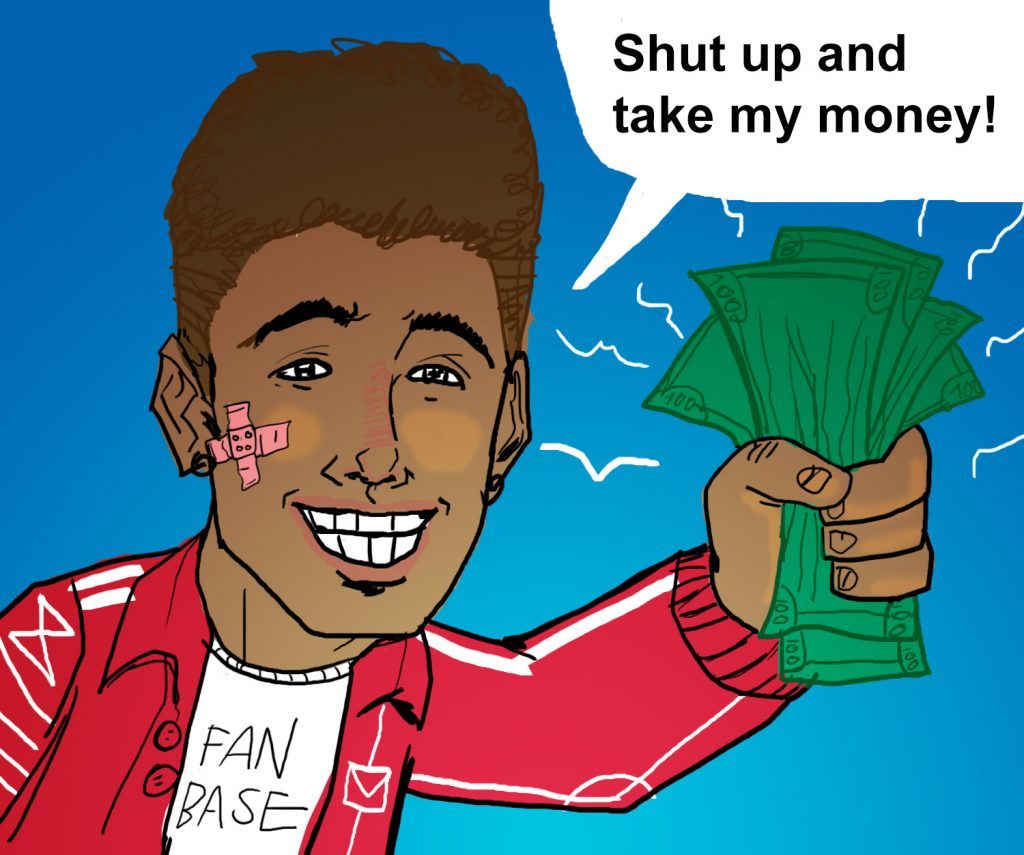
By Mars Dorian, {grow} Contributing Columnist
Bestselling author Larry Correia once gave advice on how to be a professional author who actually WRITES for a living. His two-point advice is deceptively simple:
1) “Get good enough at your writing that people give you money for your stuff.”
2) “Find the people who give you money for your stuff”
Even though these examples hail from selling (indie) books, the advice rings true for any content creator who wants to sell to their target audience. For the past months, I’ve turned the two-point advice into a viable strategy to sell my books. I want to share my three biggest lessons:
1) Find a hungry niche market
The world is flooded with advice on creating. The passion purists say you should only create what you want, and the right people will find and buy it. The commercial passion creators say you should find the convergence between what you like to create and what others will pay for. And then we have the die-hard marketer who tells you to find a (very) hungry market and then fill its needs, pronto!
The appropriate philosophy of this last point would be “Shut up and take my money,” as uttered by the fervent fanboy/girl who throws money at their computer screen. Hopefully yours!
As an indie content creator, my opinion hovers between finding the convergence of what I like to create and what the market is hungry for. So if there’s a burning demand, and I can find overlaps between that demand and my work, I can deliver.
In my indie author case, I found a hungry market in the science fiction/fantasy niche with video game-related content. Which brings us to point 2.
2) Search & observe your customer’s habitat
As marketing guru Seth Godin once said, mass marketing has ended and made way for tribal communities revolving around shared (niche) interests. With the internet eliminating geographical borders, you can find international web communities obsessing about the niches of niches: Warhammer tabletop games, rare super-hot chili sauce collections, and bilingual language learners who want to acquire Hebrew.
The more niche, the smaller and more fervent usually the fanbase.
As for me, I behaved like a safari hunter and observed the behavior and natural habitat of my targets: sci-fantasy readers who also liked role-playing games. I found a few of them on Twitter and forums. The vast majority hung out in public Facebook groups where thousands of readers shared game-related writing tips, new book discoveries, and relevant screenshots. For 2-3 months now, I engaged in these tight Facebook communities and helped out by answering questions and sharing tips. As an avid gamer myself, this came easy. Once I build connections with the people, hundreds of them shared & bought my new book within the first 48 hours.
Lesson: find the tribe of your target niche online and engage months before the release of your product. You want to be helpful and knowledgeable so people know you’re serious about your work.
3) Be Beginner-Friendly
When you’re new in a specific market and people don’t know you or your products yet, it’s advisable to make your offer as appealing and beginner friendly as possible. Raving audiences of small niches usually try out new stuff, but as a content creator, I want to meet them halfway. That’s why I took the following precautions to encourage readers to buy my new work:
- I offered multiple free digital copies and encouraged honest reviews during the launch week. This is risk-free, as there’s no money exchange involved. Also, if the readers don’t like your work and stop halfway through, they can.
- I wrote a compelling book description that showcases the similarities with other popular series. Seth Godin says never compare your work to another, but I believe that’s luxury beginners rarely can afford. If you offer your new (unknown) product, it helps to compare it to other works in the niche so potential customers get a basic idea. Once you’re more established, you can drop that marketing ‘crutch’.
- I started with a low price point ($2.99) to entice new readers to check it out. The lower the price point, the smaller the investment (risk) for a new reader. I could have priced the book at 99 cents or give it away for free, but my peers told me that only encourages readers to snap it and leave it as a dust collector on their Kindles or smart phones.
Lesson: as a newcomer, you want to take as many hurdles away as possible that separate you from your customer. You can achieve that through free giveaways, reduced pricing and clear copywriting telling your prospect exactly what to expect. Remember: a confused consumer doesn’t buy.
Conclusion
Finding small niches with hungry markets and then approaching them with an effective tactic is a viable way to sell your content. If you want to know more about the sci-fantasy novel I used as the marketing example in the tips below, check out The Crystal Crusade on Amazon and if you find this post useful, please share with your friends online.
 Mars Dorian is an illustrating designer and storyteller. He crafts words and pictures that help clients stand out online and reach their customers. You can find his homebase at http://www.marsdorian.com and connect with him on Twitter @marsdorian
Mars Dorian is an illustrating designer and storyteller. He crafts words and pictures that help clients stand out online and reach their customers. You can find his homebase at http://www.marsdorian.com and connect with him on Twitter @marsdorian

